Flags of Countries that Start with P
How many countries beginning with P? There are a total of 11 countries starting with letter P among the 193 countries in the world:
- Pakistan
- Palau
- Palestine
- Panama
- Papua New Guinea
- Paraguay
- Peru
- Philippines
- Poland
- Portugal
- Puerto Rico
Poland

Poland is a republic in Northern Europe. The country has a coast towards the Baltic Sea and borders Germany, the Czech Republic, Slovakia, Ukraine, Belarus, Lithuania and Russia. The inner parts of Poland are lowland, forest, river valleys, swamps and lakes. Farther to the S, the country rises towards the Carpathian mountain range. The coast consists of sandy beaches with high dunes and lagoons.
There is temperate mainland climate in most of the country, though a little milder towards N.
Poland has rich deposits of coal, copper, sulfur, silver and natural gas. Agricultural land is also an important natural resource.
From 1945 to 1989 Poland was a communist and part of the Warsaw Pact. Since then, the country has undergone a development from planning economy to market economy. Poland is today a member of both NATO and the EU.
Country Facts – State Capital – Population Graph – Airports – Public Holidays – Embassies of Poland – Embassies in Poland – Import Regulations – Major Trade Partners – Major Imports – Major Exports
Portugal

Portugal is a republic in SV Europe with a coast to the Atlantic Ocean. The country is located on the southwest of the Iberian Peninsula and bordering Spain in the island. The majority of the landscape in the S is lowland. IN there are highlands and mountain ranges. The coast consists of flat sandy beaches towards the SV and steep cliffs in N. Portugal also include the autonomous islands of Madeira and the Azores, off West Africa.
Portugal has subtropical climate with winter rain. In the NE, however, there is a temperate coastal climate.
Portugal has mineral deposits of, inter alia, copper and marble. Traditionally, fishing has been an important profession. Cork, wine and eucalyptus are important crops from agriculture and forestry. However, agriculture is outdated and quite inefficient. Tourism is an important profession, especially towards the S along the Algarve coast.
Portugal is a member of NATO and the EU.
Country Facts – State Capital – Population Graph – Airports – Public Holidays – Embassies of Portugal – Embassies in Portugal – Import Regulations – Major Trade Partners – Major Imports – Major Exports
Panama
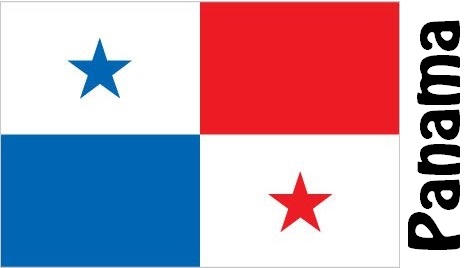
Panama is a republic in Central America. The country is bounded by the Caribbean Sea in the N, Pacific Ocean in the S, Costa Rica in the V and Columbia in the Island. The Panama Canal connects the Caribbean and the Pacific.
The climate is tropical and humid with a long rainy season from May to January.
The most important natural resources are timber and shrimp. Agriculture produces bananas, coffee and cocoa for export as well as rice, corn and beans for self-sufficiency. Services related to the Panama Canal and tourism are of great importance to the economy.
Panama is a poor country with large socio-economic disparities, high unemployment and food shortages.
Country Facts – State Capital – Population Graph – Airports – Public Holidays – Embassies of Panama – Embassies in Panama – Import Regulations – Major Trade Partners – Major Imports – Major Exports
Paraguay
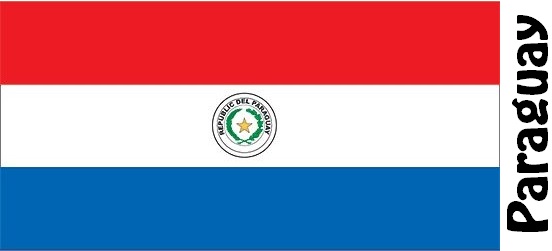
Paraguay is a republic in South America. The country is an inland state with borders to Bolivia, Brazil and Argentina. The Paraguay River, which runs NS, divides the country into a western and an eastern part. The western part is made up of flat plains, dense scrub and swamps. In the island the landscape is hilly and covered with rainforest.
The climate is tropical. It is dry in V.
Agriculture is the most important profession and employs almost 1/3 of the workforce. In particular, manioc is grown for self-sufficiency and soybeans, sugar cane and cotton for export. Timber and hydropower are also important natural resources.
Paraguay became independent in 1811. Since then, the country has participated in several wars. From 1954 to 1989, Paraguay was a dictatorship.
Country Facts – State Capital – Population Graph – Airports – Public Holidays – Embassies of Paraguay – Embassies in Paraguay – Import Regulations – Major Trade Partners – Major Imports – Major Exports
Peru
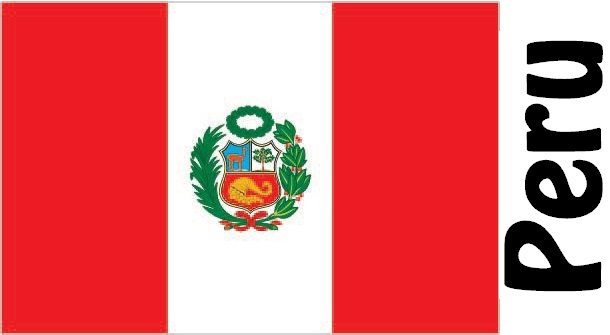
Peru is a republic in the western part of South America. Boundaries for Ecuador, Colombia, Brazil, Bolivia and Chile. Andean mountains extend throughout the country. The island of the Andes in the Amazon has rainforests, lowlands and rivers. Farther to the V is the landscape dry coastal plain.
There is tropical rainforest in the island and dry desert at the coastal plain in V. The climate is temperate in the Andes, however, with large daily temperature fluctuations. Earthquakes and volcanic eruptions occur.
The most important resources in Peru are copper, zinc, tin, silver, lead, iron, gold and hydropower. Agriculture and fisheries are important professions.
About half of Peru’s population is Native Americans. Peru is characterized by great social and economic inequality, poverty, corruption and crime.
Country Facts – State Capital – Population Graph – Airports – Public Holidays – Embassies of Peru – Embassies in Peru – Import Regulations – Major Trade Partners – Major Imports – Major Exports
Philippines

The Philippines is a republic in SE Asia, and consists of over 7100 islands and atolls surrounded by coral reefs. The Philippines is located in the Pacific Ocean by the South China Sea and the Celebes Sea. The two largest islands are Luzon and Mindnao.
The climate is tropical with monsoon rains in SV in summer and in NE in winter. Frequent heavy typhoons, earthquakes and volcanic eruptions occur.
Agriculture, fisheries and industry are the most important occupations. Especially rice and maize are grown for self-sufficiency as well as coconuts and bananas for export. Significant natural resources are copper, gold, oil and hydropower.
The Philippines was first a Spanish and later an American colony. The country became independent in 1946.
Country Facts – State Capital – Population Graph – Airports – Public Holidays – Embassies of Philippines – Embassies in Philippines – Import Regulations – Major Trade Partners – Major Imports – Major Exports
Pakistan

Pakistan is a republic in S Asia on the Arabian Sea. Borders of Iran, Afghanistan, China and India. The landscape consists of high mountain ranges in the N, plateaus, desert areas and mountains in V as well as large river plains on the Indus river in the island and S.
Pakistan’s southern part has dry tropical climate. Towards N there is a cooler and rainier subtropical climate. Frequent earthquakes.
The country’s most important natural resources are natural gas, coal, hydroelectric power and agricultural land. In particular, cotton, sugar and tobacco are grown for export as well as rice, wheat, potatoes and vegetables for self-sufficiency. Large animal husbandry.
In 1947, Pakistan became independent from the United Kingdom and divided into West and East Pakistan. East Pakistan disbanded in 1971, forming the state of Bangladesh. Pakistan has unresolved conflicts with India over Kashmir.
Country Facts – State Capital – Population Graph – Airports – Public Holidays – Embassies of Pakistan – Embassies in Pakistan – Import Regulations – Major Trade Partners – Major Imports – Major Exports
Palestine
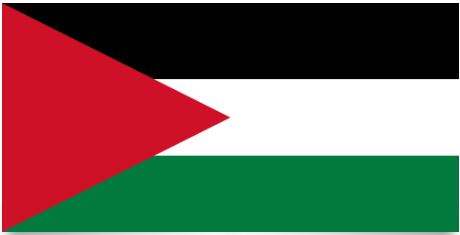
Palestine consists of the Gaza Strip and the West Bank. The Gaza Strip is a flat coastal plain along the eastern Mediterranean. The area borders Egypt and Israel. The West Bank lies between Israel and Jordan and consists of highlands in the V and the Jordan Valley with the Jordan River and Dead Sea in the island.
The climate is subtropical and dry with mild to cool winters and hot, dry summers.
Agriculture is the most important profession, but the economy suffers from persistent conflict with Israel.
Previously, Palestine made up all of present-day Israel, the Gaza Strip, and the West Bank, but in 1948, the United States divided Palestine into a Jewish and an Arab state. Today, Palestine has achieved self-government in Gaza and the West Bank.
Country Facts – State Capital – Population Graph
Palau
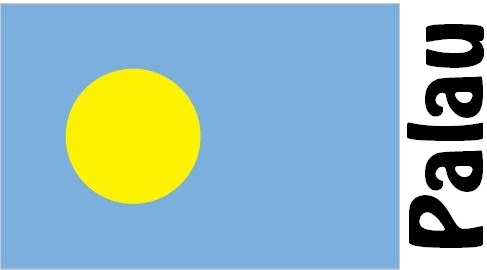
Palau is a Republic of Micronesia in the western Pacific Ocean. The country includes more than 300 volcanic and coral islands, the largest of which is Babelthuap. The islands are fertile with rainforest, mangrove forest, coconut palms, white sandy beaches and coral reefs.
The climate is tropical and there are frequent hurricanes.
Agriculture, fisheries and tourism are the main occupations. In particular, tuna, other fish, seafood, copra and coconuts are exported.
Palau first became independent in 1994. Until independence, the country had been the US area of supervision. In the years following independence, the United States contributed considerable financial support to Palau. Palau remains closely associated with the United States.
Country Facts – State Capital – Population Graph – Airports – Public Holidays – Embassies of Palau – Embassies in Palau – Import Regulations
Papua New Guinea

Papua New Guinea is located in the Pacific Ocean N of Australia. The country includes the eastern part of the island of New Guinea as well as a number of smaller islands. New Guinea’s landscape consists of lowland with swampy plains, rainforest and rivers in the S, a central highland with mountains and valleys, a narrow coastal plain in the N as well as a mountain range extending from the SE to NV. The other islands are volcanic and mountainous.
The climate is tropical with monsoon rain.
The most important natural resources are gold, copper, timber and oil and agricultural land. About 3/4 of the population is employed in agriculture, and many live on self-sufficiency agriculture. Coffee, copra, rubber, tea, cocoa and palm oil are exported.
Papua New Guinea became independent in 1975. Member of The Commonwealth. The country is one of the least developed in Asia.

Country Facts – State Capital – Population Graph – Airports – Public Holidays – Embassies of Papua New Guinea – Embassies in Papua New Guinea – Import Regulations – Major Imports – Major Exports













































